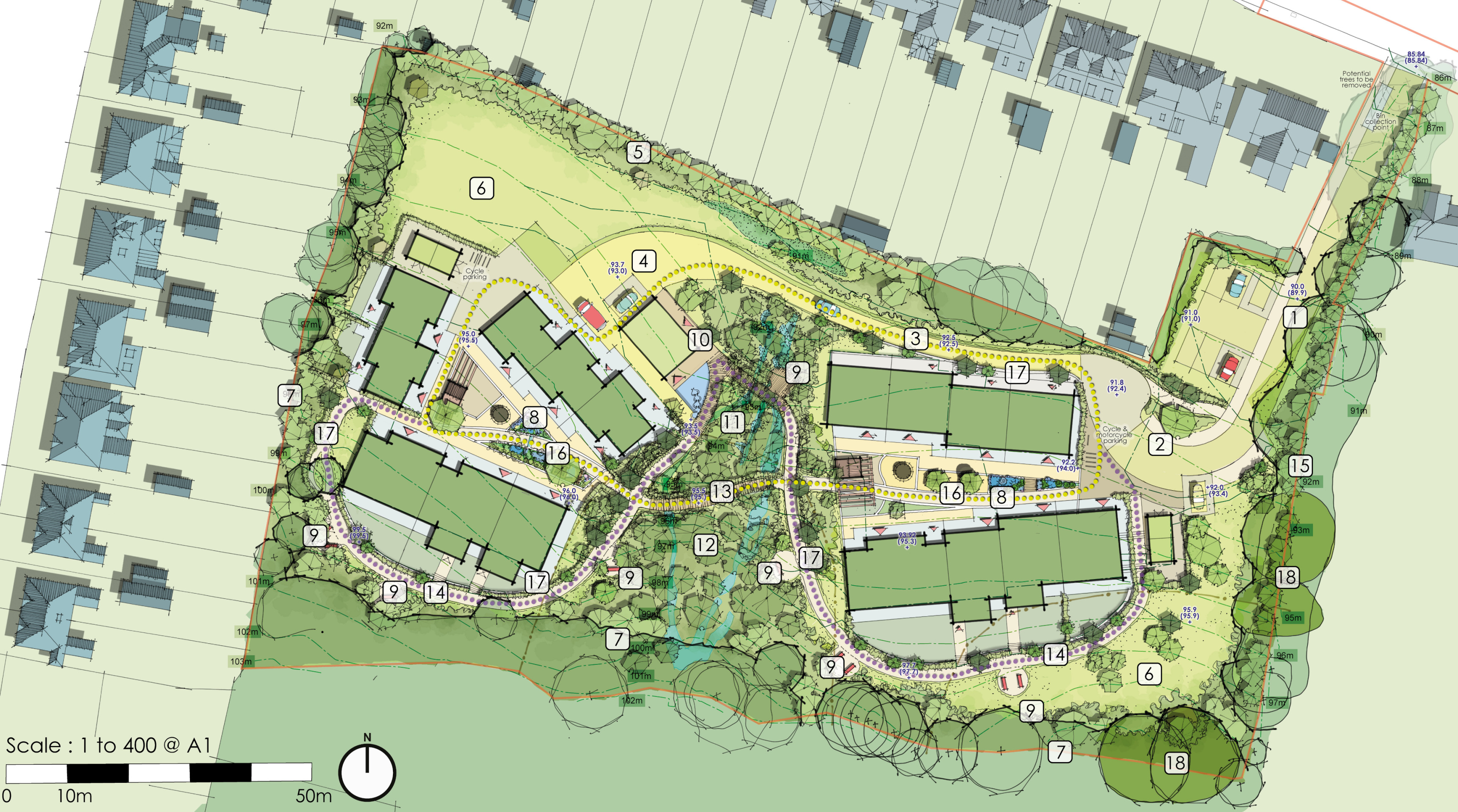Building with nature
The landscape design for the site builds on thorough site and contextual analysis and seeks to sensitively integrate the new buildings into the wider landscape, respecting long distance views and the wider heritage context. The ‘Building with Nature’ approach is nature-friendly, sensitive to location, and considers long-term maintenance and management.
Landscape plan - click to enlarge
Key to plan
- Gateway and site access: selective tree removal to accommodate permeable paving entrance road and 2m pedestrian access.
- Arrival: this is the threshold for the wider site and includes a drop-off and pick-up area, as well as blue badge parking and minibus drop-off.
- ‘Country Lane’: provides a shared vehicle and pedestrian track connecting across the site, in permeable paving.
- Drop-off area: provides an informal drop-off and pick-up point as well as a turning circle for emergency vehicles and a blue badge parking space. Potential to use grasscrete or similar surfacing in this area.
- Planting along northern boundary: new planting to screen views into the site and frame views out of the site.
- Species-rich grassland: potential to restore species-rich grassland in this area.
- Boundary improvements along western and southern site boundary: additional planting in these areas to fill gaps and increase biodiversity. Selective planting using native trees, shrubs and understorey plants. Secure fencing to site boundaries.
- Courtyard gardens: possible features include productive food areas, specimen trees for shade, an ‘activity hub’ garden building, flexible soft and hard landscaped areas.
- Break-out / resting areas: incorporating seating.
- Communal Facility: area around the communal facility to include interaction with natural environment. Direct access to woodland and water.
- Green and blue infrastructure: water attenuation as part of drainage strategy and enhanced biodiversity, creating areas of damp and wet habitat.
- ‘Forest Garden’: wet woodland planting to help stabilise the slope. Providing recreational opportunities as well as improving biodiversity.
- Decked walkway: linking the housing clusters and creating all-access walking route through courtyards.
- Circular footpaths: lower path accessible for all, higher path allows interaction with woodland edge and affords opportunities to enjoy far-reaching views. Approximately 1m high gabion retaining wall to rear gardens to enable level access to the rear of split-level properties.
- Improved hedgerow / bat movement lines: native planting to improve species-poor hedgerow, enhance biodiversity and strengthen bat corridors.
- Central planting band: hedgerow and courtyard planting to soften the visual impact, trees in planters where close to buildings.
- Native hedging along walking routes: green infrastructure links, helps wayfinding through site, adds to screening and improves biodiversity.
- Veteran trees: protected during construction. Management plan to be developed.
